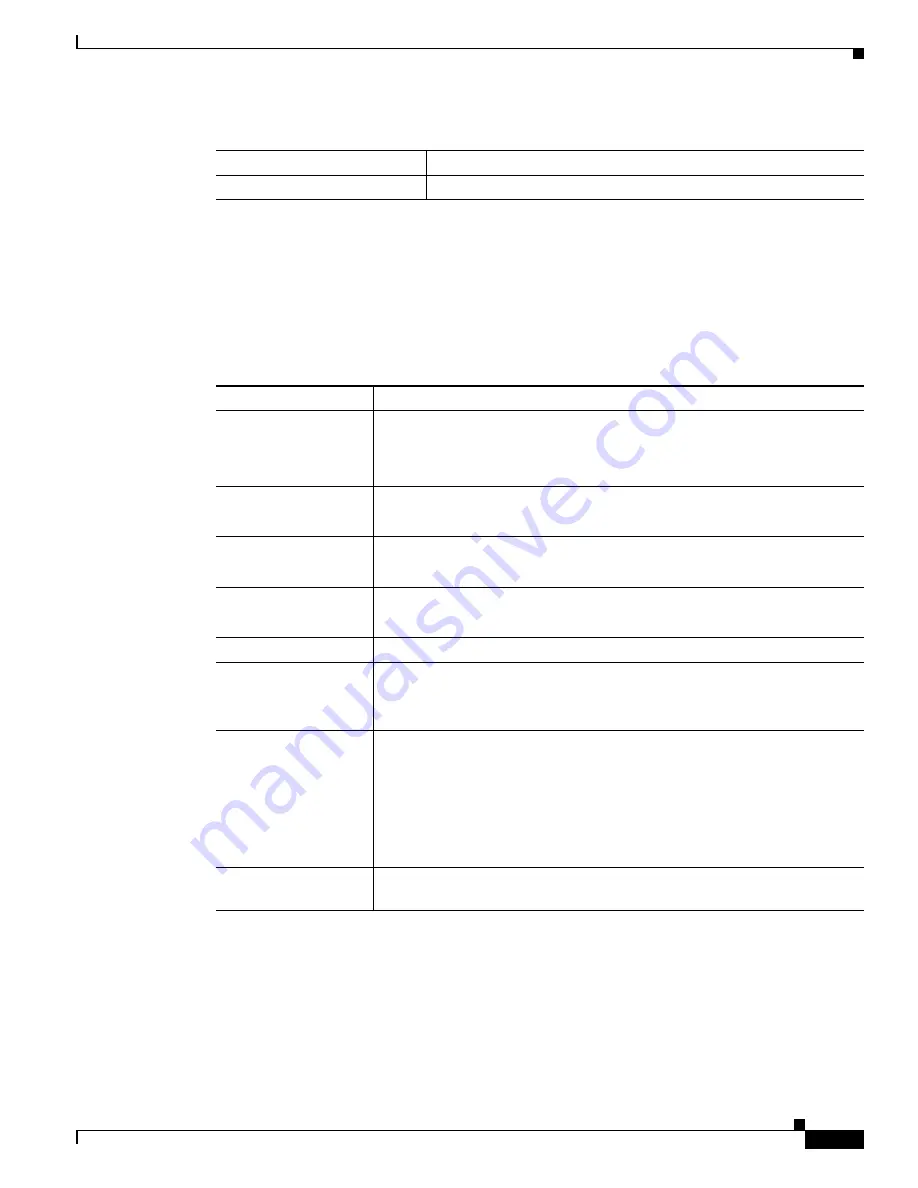
A-3
Cisco CRS Carrier Routing System 4-Slot Line Card Chassis Installation Guide
OL-10971-10
Appendix A Cisco CRS 4-Slot Line Card Chassis System Specifications
Environmental Specifications
Environmental Specifications
Table A-2
lists the environmental specifications for the Cisco CRS 4-slot line card chassis.
Chassis airflow
Up to 880 cubic ft (24,919 liters) per minute
Power shelf airflow
60 cubic ft (1699 liters) per minute
1.
Protective earthing conductor (ground wire).
Table A-1
Cisco CRS 4-Slot Line Card Chassis Specifications (continued)
Table A-2
Cisco CRS-1 4-Slot Line Card Chassis Environmental Specifications
Description
Value
Temperature
Operating, nominal: 41° to 104°F (5° to 40°C)
Operating, short-term: 23° to 122°F (–5° to 50°C)
1
Nonoperating: –40° to 158°F (–40° to 70°C)
Humidity
Operating: 5% to 85% noncondensing
Nonoperating: 5% to 90% noncondensing, short-term operation
Altitude
–197 to 5906 ft (–60 to 1800 m) at 122°F (50°C), short-term
Up to 10,000 ft (3048 m) at 104°F (40°C) or below
Heat dissipation
•
AC: 14,280 BTU per hour (maximum)
•
DC: 14,597 BTU per hour (maximum)
Power density
12,406 W per sq. meter (maximum)
Average air exhaust
temperature
129°F (54°C)—At room temperatures of 95 to 102°F (35 to 39°C)
149°F (65°C)—Maximum exhaust temperature on a fully loaded system
during worst-case operating conditions (50°C and 6000 ft altitude)
Acoustic noise
Fans at normal to moderate speed:
67 dBa—front of chassis
77 dBa—rear of chassis
Fans at maximum speed (7500 RPM):
83 dBa—front of chassis
93 dBa—rear of chassis
Shock and vibration
Designed and tested to meet the NEBS shock and vibration standards defined
in GR-63-CORE (Issue 2, April 2002).
1.
“Short-term” refers to a period of not more than 96 consecutive hours and a total of not more than 15 days in one year. This
refers to a total of 360 hours in any given year, but no more than 15 occurrences during that one-year period.

































